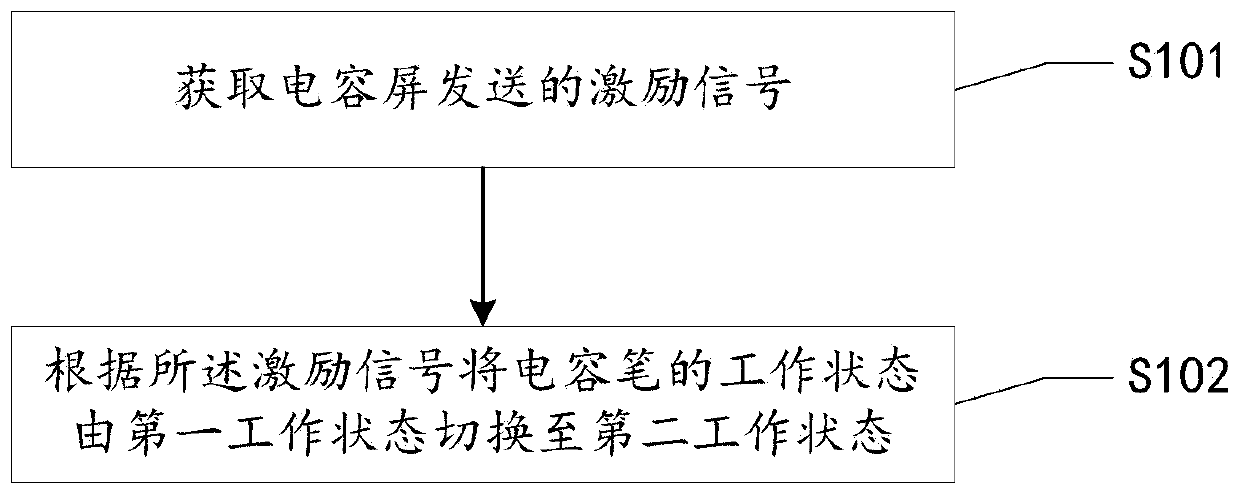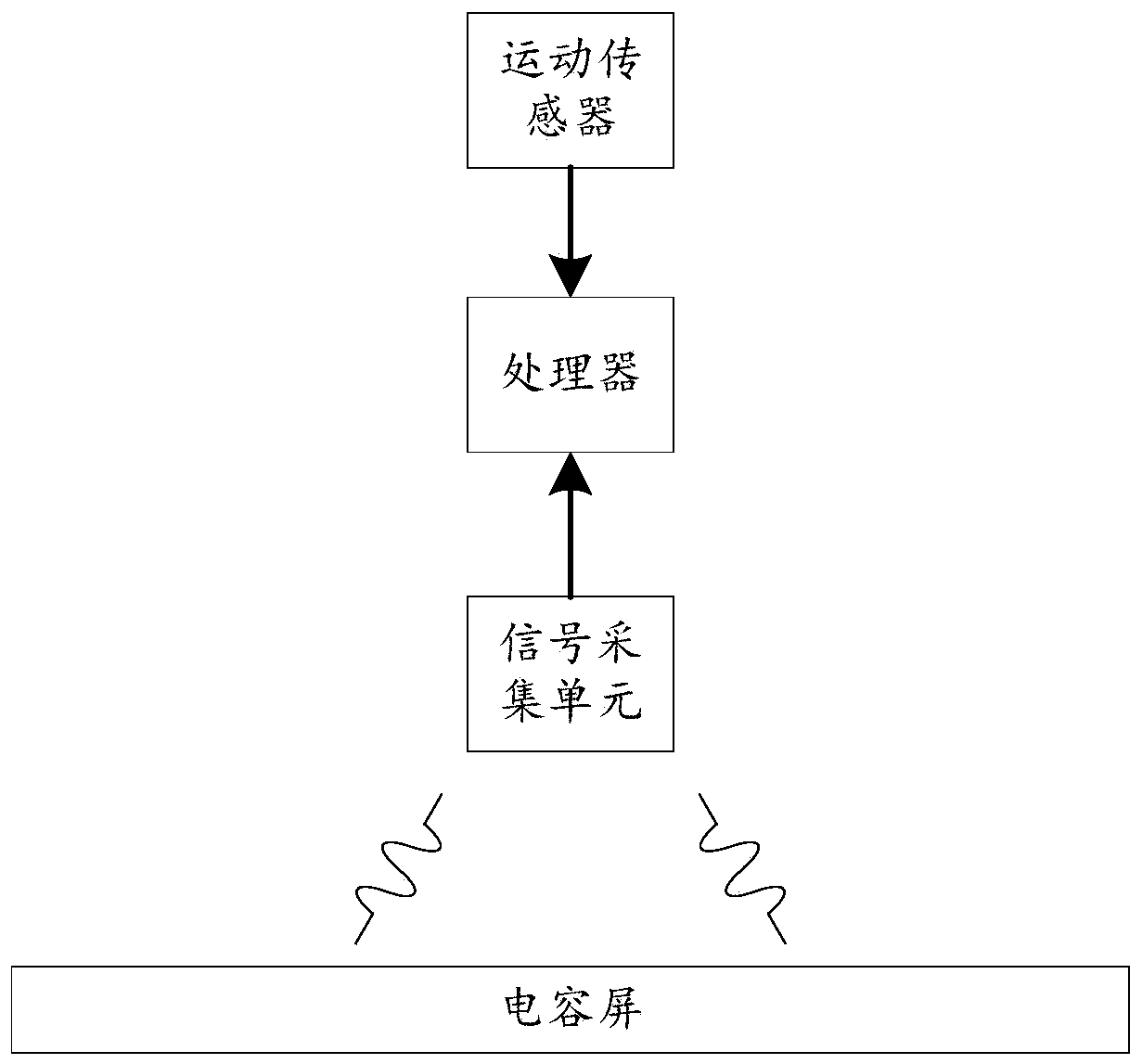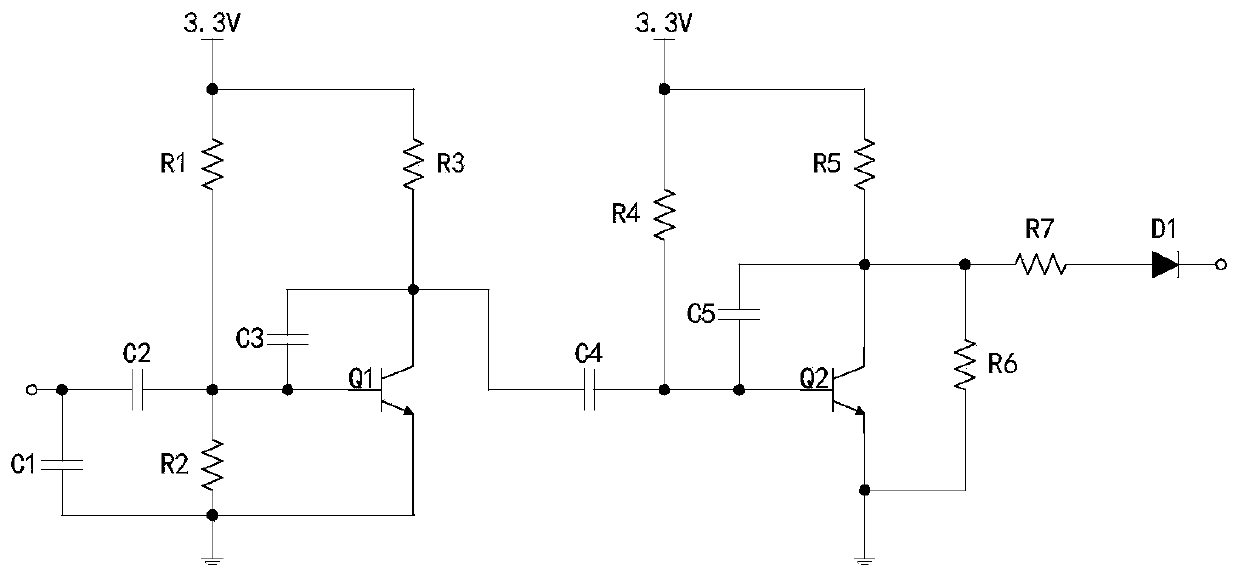Energy-saving method and device for capacitive pen and capacitance pen
An energy-saving device, a technology of a capacitive pen, which is applied to the input/output process of electrical digital data processing, instruments, and data processing, etc., can solve the problems of weak battery life, large power consumption, and inability to meet users' long-term use, etc. The effect of long battery life and power saving
- Summary
- Abstract
- Description
- Claims
- Application Information
AI Technical Summary
Problems solved by technology
Method used
Image
Examples
Embodiment 1
[0042] Such as figure 1 As shown, the present embodiment proposes a method for energy saving of a capacitive pen, the method comprising:
[0043] S101. Obtain an excitation signal sent by the capacitive screen.
[0044] Specifically, currently common capacitive screens on the market are generally divided into two types: surface capacitive screens and projected capacitive screens, wherein projected capacitive screens are further divided into self-capacitive screens and mutual capacitive screens. Surface capacitive screens and self-capacitive screens are difficult to achieve true multi-touch due to limitations in their structure and working principle. Therefore, the mutual capacitance screen becomes the capacitive screen that more users tend to use. The mutual capacitance screen uses ITO to make horizontal electrodes and vertical electrodes on the glass surface. The difference between it and the self-capacitance screen is that the intersection of two sets of electrodes will fo...
Embodiment 2
[0056] Such as figure 2 As shown, corresponding to Embodiment 1, this embodiment proposes an energy-saving device for a capacitive pen. The device includes a signal acquisition unit and a processor. The signal acquisition unit is used to collect the excitation signal sent by the capacitive screen. A processor configured with processor-executable operational instructions to perform the following operations:
[0057] Obtain the excitation signal sent by the capacitive screen collected by the signal acquisition unit;
[0058] The working state of the capacitive pen is switched from the first working state to the second working state according to the excitation signal.
[0059] Specifically, in this embodiment, a signal collection unit is used to collect the excitation signal sent by the capacitive screen. The signal acquisition unit can be realized by a triode. Such as image 3 As shown, the signal acquisition unit includes a two-stage amplifier circuit and a half-wave shapi...
Embodiment 3
[0062] Such as Figure 4 As shown, this embodiment proposes a capacitor pen, which includes a pen body and a capacitor pen energy-saving device. The pen body includes a pen body and a nib. The nib is arranged at the front end of the pen body. The energy-saving device of the capacitive pen is arranged in the pen body. Wherein, the signal collection unit is arranged near the tip of the pen, and is used to collect the excitation signal sent by the capacitive screen. The processor is used for switching the working state of the pen body according to the excitation signal.
[0063] Specifically, the pen body described in this embodiment is a conventional active capacitive pen or passive capacitive pen structure, which includes a pen body and a pen tip. The nib is arranged at the front end of the pen body. A circuit structure capable of realizing the basic functions of the pen body and an energy-saving device for the capacitive pen are arranged in the pen body. The circuit stru...
PUM
 Login to View More
Login to View More Abstract
Description
Claims
Application Information
 Login to View More
Login to View More - R&D
- Intellectual Property
- Life Sciences
- Materials
- Tech Scout
- Unparalleled Data Quality
- Higher Quality Content
- 60% Fewer Hallucinations
Browse by: Latest US Patents, China's latest patents, Technical Efficacy Thesaurus, Application Domain, Technology Topic, Popular Technical Reports.
© 2025 PatSnap. All rights reserved.Legal|Privacy policy|Modern Slavery Act Transparency Statement|Sitemap|About US| Contact US: help@patsnap.com



